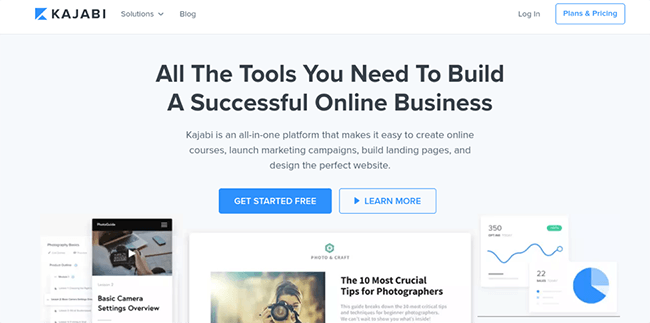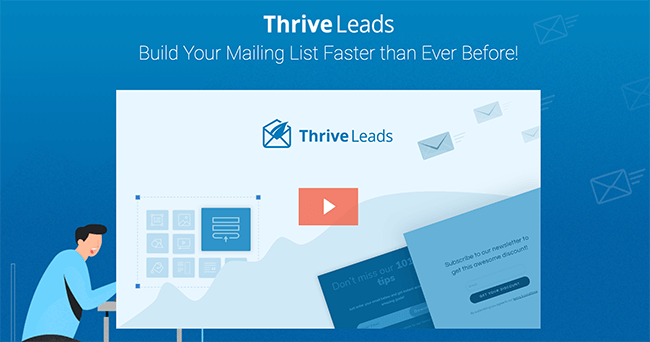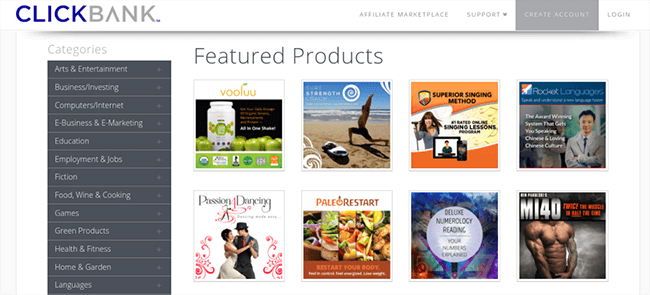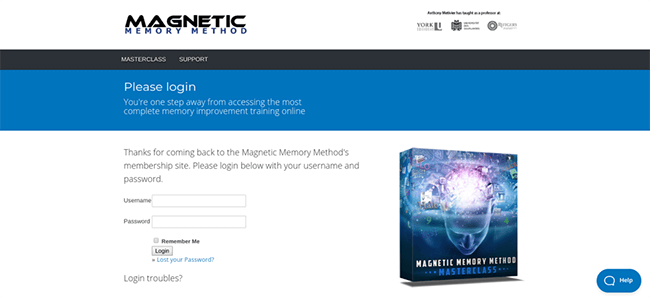How To Monetize Your Blog Without Impacting The User Experience (6 Tips)
There are more ways than ever before to create and monetize a blog. However, knowing how to go about it can be a bit tricky. Some of the most popular and traditional methods of monetization can be intrusive, distracting, and could result in poor user experience.
Using user-friendly monetization techniques can help create a revenue stream without compromising the experience for your site’s visitors. The key is choosing a method that makes the most sense for both your blog content, and where you’re at in the blog’s life cycle.
In this post, we’ll discuss some of the monetization methods that impact user experience negatively. Then we’ll provide six tips for techniques you can use for more user-friendly monetization.
Let’s get started!
Common monetization methods (and the problems they cause for users)
Starting a blog is one of the fundamentals of online marketing. You can use it to establish yourself as an authority in your field, boost your Search Engine Optimization (SEO), and promote your products and services.
Many people use their blogs as a way to earn money. Becoming self-employed is the top reason people choose to start a blog, with some professional bloggers earning an average profit of $138,064.
There are many benefits to monetizing your blog. In addition to offering you control over how you promote and sell, monetization methods often require very little production costs. Of course, the main draw is recurring revenue.
However, some of the traditional and popular methods of blog monetization can negatively impact user experience. An example is displaying an excessive amount of ads.
They can be distracting and irritating to visitors, especially when they’re irrelevant to the site content. Too many ads can also slow your site speed, which further hurts the user experience.
Another common method is pop-ups. Using pop-ups to sell or advertise products isn’t entirely effective. While they can be useful for gathering leads and building email subscribers, many visitors will be quick to click out of the pop-up to get to the content they actually came to consume.
These tactics can be especially frustrating for mobile users. Large banner adverts that hog the screen or send visitors away to a different app don’t make the best impression. Fortunately, there are better ways to monetize your blog.
6 tips to monetize your blog without impacting the user experience
If you want to monetize your blog without compromising a pleasant experience for your site’s visitors, there are a few powerful methods you can use. Let’s take a look at six tips you can use.
1. Consider selling an online course or e-book
If you have an expertise or specific skill set, why not share (and sell) your knowledge? Online courses and e-books are valuable products you can sell on your blog to increase your earnings, while also providing value to your audience.
If you want to create an e-book, you might consider compiling a collection of old blog posts as a starting point. You can update, tweak, and repurpose your content accordingly to provide a guide or tutorial.
To brainstorm topic ideas, consider some of the most common challenges and questions your customers often have regarding your industry or services. People will be more likely to purchase a product if they can see its value and how it will solve their pain points.
Similarly, you could create and sell online courses. It’s worth mentioning that you don’t need to have experience in education or teaching skills to do this successfully. Platforms such as Kajabi make it easy to create and deliver online courses:

This course creation platform offers an all-in-one solution for putting together a quality course to market and sell to customers. It’s easy to use and offers templates, automation, and ‘blueprint’ product templates for your creations. To test it out, you can sign up for their 14-day free trial.
As with e-books, you can come up with course topics by conducting research on your audience. First, consider subjects and skills you’re particularly well-versed in. Then narrow down a list of ones you would feel comfortable creating a tutorial for.
2. Use your email list to drive conversions
Email marketing is one of the oldest online advertising techniques that is currently – and will continue to be – effective. You can leverage it to drive traffic to your blog and increase conversions.
There are various ways you can use your email list to increase sales, including:
- Affiliate marketing
- Special product deals and promotions
- Offering membership discounts
- Promoting an e-book or online course
Thanks to the versatility of email marketing, increasing your email subscriber list is one of the most profitable strategies you can implement for your blog. Plus, there are plenty of tools you can use to make building out your email list quick and easy.
For example, you might consider adding an opt-in form to your blog using a plugin such as Thrive Leads.

As one of the best opt-in form plugins for WordPress, you get access to plenty of features. Including an easy-to-use drag-and-drop builder. To prevent your opt-in form from negatively impacting the user experience, it’s a good idea to consider placement.
We recommend putting the opt-in boxes or pop-ups at the bottom of blog posts. You might also consider offering a free resource, such as an e-book or template, for users to download if they join your email list.
If you want more ideas, check out our article on how to grow your email list.
Once you start sending emails to your list, you’ll need to consider how to craft engaging emails, optimum send times, types of emails to send – soon enough you’ll be able to drive traffic and revenue from your email list.
3. Join an affiliate marketing program
Affiliate marketing is one of the most popular methods for monetizing a blog. It involves a business paying commission to its marketers (the affiliates) for successfully promoting their products.
This method is ideal if you’re just starting out and don’t have your own products to sell yet. It can be an effective method for generating a passive income by promoting products through your blog.
The key to successful affiliate marketing – that doesn’t annoy or deter your audience – is choosing a specific, relevant niche. For example, if you have a health and fitness blog, it doesn’t make much sense to promote home decor products.
It’s possible that your blog covers a wide variety of topics. In this case, it’s still best to focus on one target niche and expand as necessary.
To choose an affiliate niche, it helps to consider the following questions:
- What is your audience most interested in?
- Why do people come to your blog?
- Which posts and topics generate the most engagement?
- What products would these readers find valuable?
- Are there any products you use and are passionate about?
Once you establish your affiliate niche, you’re one step closer to finding products to promote. To find affiliate partners and products, consider using an affiliate marketing platform.
For example, ClickBank is a popular option for information products:

You can use this website to browse categories and find one that makes sense for your niche. Then you can search products, learn about the vendors, and gain insight into the earning potential for referred sales.
If you use WordPress, then you may want to check out our article on affiliate marketing plugins for WordPress. These plugins will help you squeeze more performance out of your website, allow you to track clicks, and more.
4. Offer coaching or consulting services
If you’re already selling online courses or e-books, the next step in leveraging your knowledge and skills to monetize your blog is offering coaching or consulting services. Coaching and consulting offers a more personalized and detailed approach than typical guides and tutorials.
Another benefit is that you can make a decent amount of money from only a few clients. Plus, because you’re sharing information you already know, it doesn’t take much time, effort, or money to incorporate this service.
Let’s say you have a personal finance blog. You might consider offering consulting services to people looking to reduce their debt or improve their spending habits.

To get started, consider reaching out to your current email subscribers to let them know about your service. You might even consider adding a Call To Action (CTA) at the bottom of posts.
It’s also a smart idea to offer plan packages, in order to capture as many customers as possible.
For example, the simple approach is to provide a free initial consultation, followed by a pricing tier based on 30 minutes, one hour, and multiple sessions. From there, you can gauge the need from your customer base and create custom plans tailored to the feedback you receive.
5. Try selling subscriptions to private content
As we discussed, too many ads on your blog can be distracting and disruptive. As an alternative, you can monetize your blog by offering subscriptions to premium content and membership sites. Essentially, this is when you put some of your quality content and extended offerings behind a paywall:

Subscription models are becoming increasingly popular for businesses. Charging a recurring fee for access to otherwise private content gives you a stream of steady and predictable income.
If your blog is generating a fair amount of repeat traffic, it’s a sign that your audience finds your content valuable. Therefore, they’ll be more likely to consider a membership fee worthwhile. This is especially true if the subscription includes exclusive benefits and perks such as discounts.
There are a number of methods you can use to create a membership or subscription site with WordPress. One option is to use a third-party tool such as Kajabi. You could also use a membership plugin such as MemberPress:

To get started, you’ll need to create an account. Then you can choose from some of their popular pricing plans.
6. Accept donations to your blog
Another blog monetization strategy you can use is accepting donations to your blog. This can be particularly useful if you’re a nonprofit organization.
When readers appreciate and value content, they’re often willing to support it. Many people understand that it takes money to run a website. Therefore, if they know the money will make it easier to continue running your blog and providing the content they want, they’ll be more inclined to make a donation.
Plus, asking for donations – or simply making it an option on your site – can reduce the need for unsightly and annoying advertisements. Similar to subscribing to a membership site, people typically don’t mind paying for something if it means a better experience for them.
It’s important to make the option to donate to your blog visible and accessible. To add a donation feature to your blog, you can use a plugin such as PayPal Donations:

Once you install and activate the plugin, it will add a PayPal donation shortcode and widget to your site. You can choose between different button styles or create your own. You can also use the shortcode to insert the button on any page or post on your site.
Conclusion
Monetizing your blog is an effective way to generate an additional revenue stream – and there are many ways to go about it. However, it’s important to make sure the monetization methods you choose won’t hurt the user experience for visitors.
As we discussed in this post, six tips you can use to monetize your blog without impacting the user experience include:
- Consider selling an online course or ebook.
- Use your email list to drive conversions.
- Join an affiliate marketing program.
- Offer coaching or consulting services.
- Try selling subscriptions to private content.
- Accept donations to your blog.

